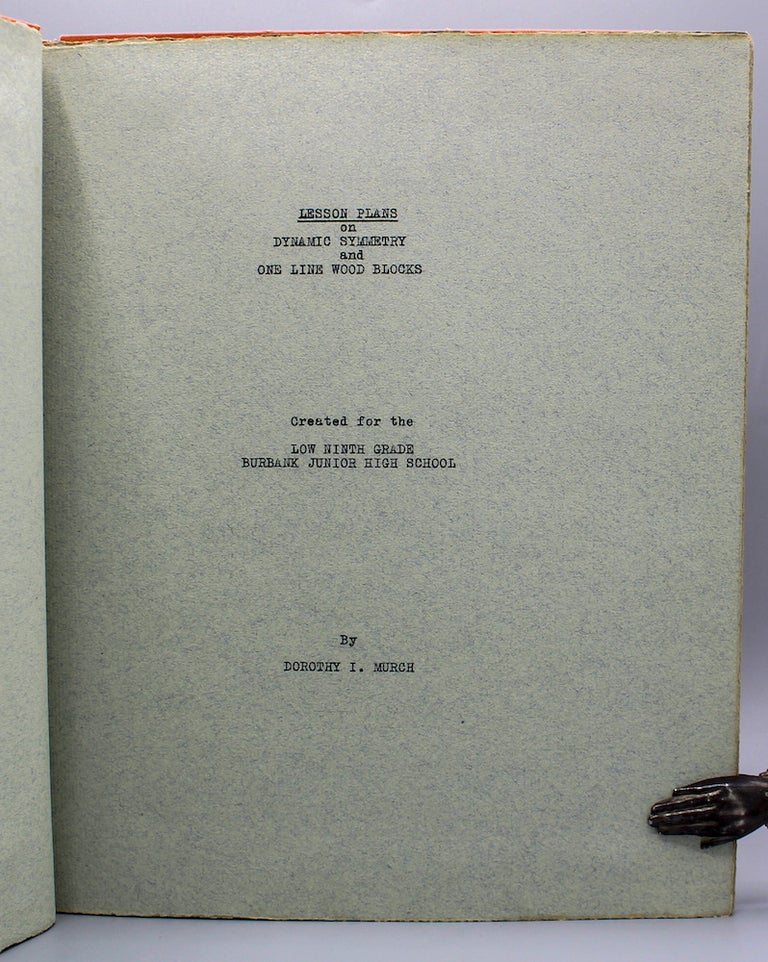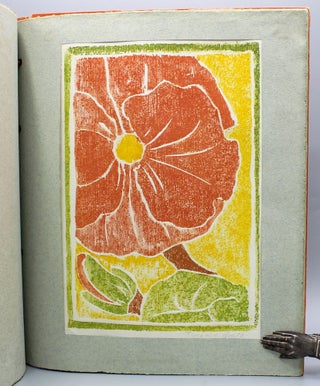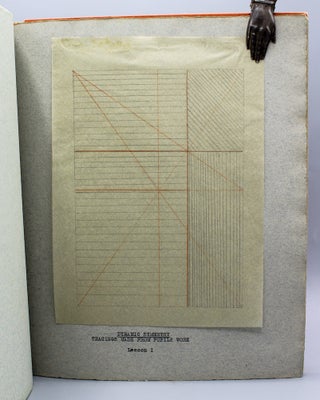Lesson Plans on Dynamic Symmetry and One Line Wood Blocks. Created for the Low Ninth Grade Burbank Junior High School.
[ Berkeley California: ca. 1930s]. A unique item. Block printing was a fixture of many school art classes during the 1910s-30s. California was a hub of block print making during the Arts & Crafts movement, with iconic California artists like Pedro Lemos (1882 – 1958) publishing art education books that featured block print making in the San Francisco Bay Area. With three original color Provincetown method block prints by students (and signed by them). Also with five tipped-in hand-drawn diagrams depicting lines of symmetry. Typewritten image captions and introduction explaining the concept of “dynamic symmetry” and how it relates to art education. Some shelfwear. Toning to first and last page; otherwise, very clean throughout. A teacher’s art lesson plan in very good condition. Original orange portfolio bound with twine. 9 in. x 11 in. 9 pp. (one side only). Item #17159
A detailed and beautifully executed lesson plan compiled by educator Dorothy I. Murch, who developed the plan to teach the principles of “dynamic symmetry,” a term coined by art educator and scholar Jay Hambige in the late 1910s. Murch notes that her dynamic symmetry lesson used magazine page layout as a model and encouraged students to make their own layouts. Murch describes in detail her educational approach and the desired outcome of the lesson, as follows: “[The] lecture preceding the lessons covered the following points: 1. A brief introduction and history – to show that these principles were not new but had been used as far back as the days of the Egyptians. 2. Root Rectangles – the simplest method of obtaining them. 3. The construction of the trellis. 4. Nodal points…Outcome: An understanding of the simplest principles of dynamic symmetry. The ability to take these principles and apply them to a definite problem. Better appreciation of proportion, balance, variety of surface shapes and background spaces. An awakening of interest in good magazine layouts,” (pp. 2-3).”.
Dorothy Ida Murch is listed as a student at the University of California, Berkeley in the university register for the 1931-1932 school year. This was likely her graduate education, as she is also listed as an undergraduate in Mills College records during the 1919-1920 school year.
Price: $600.00








